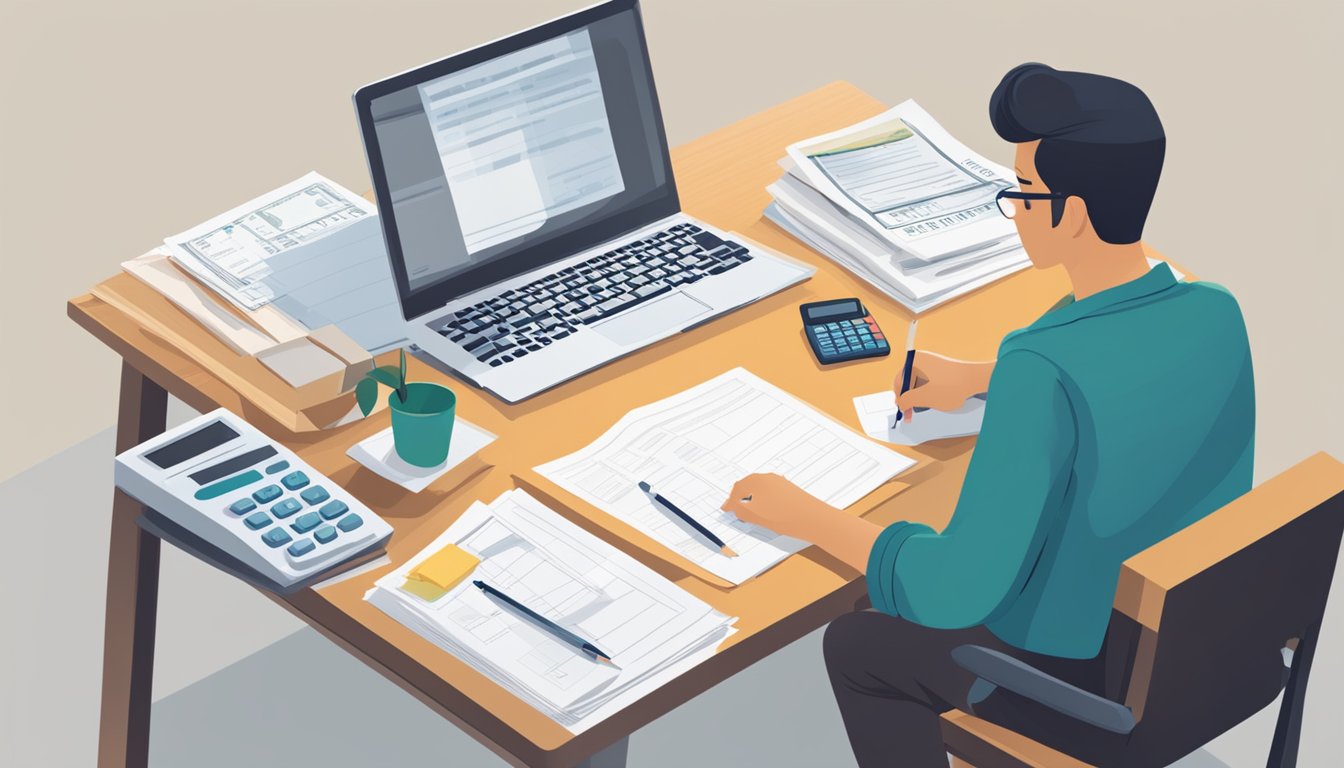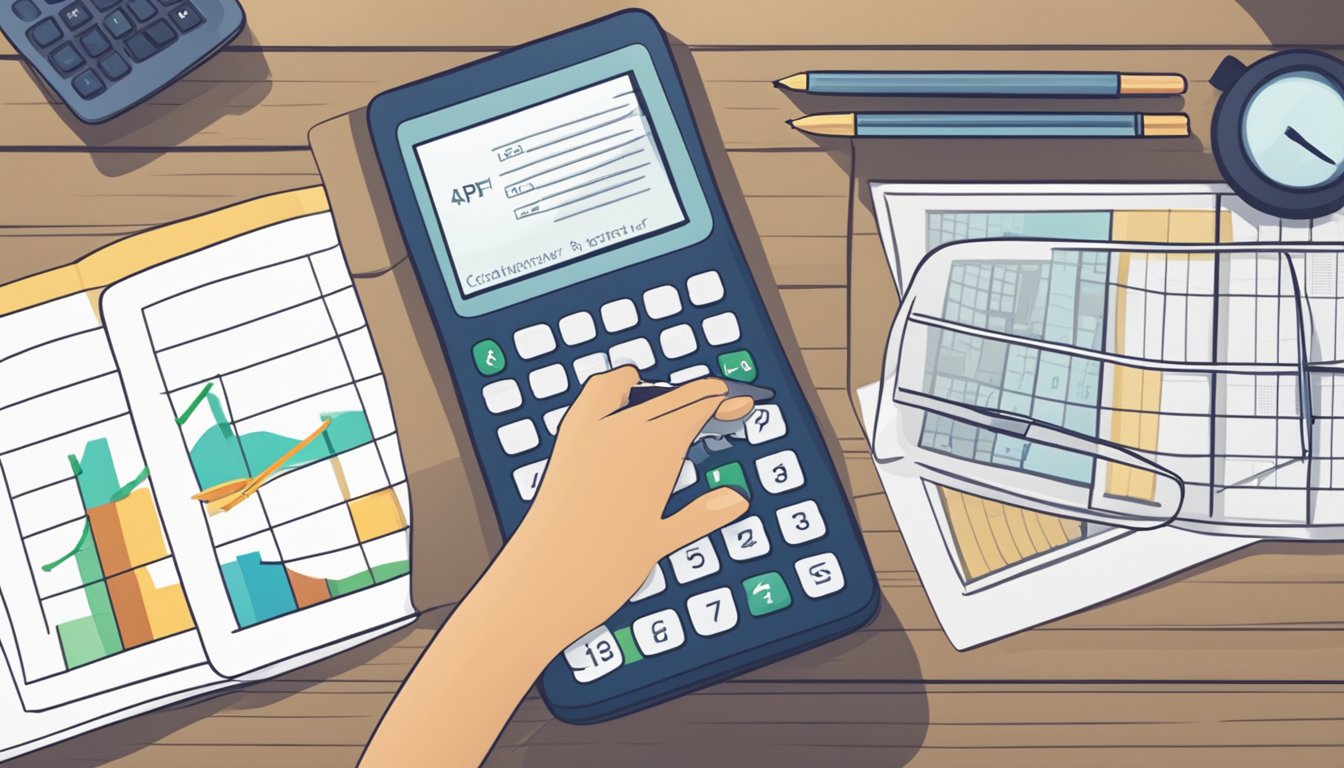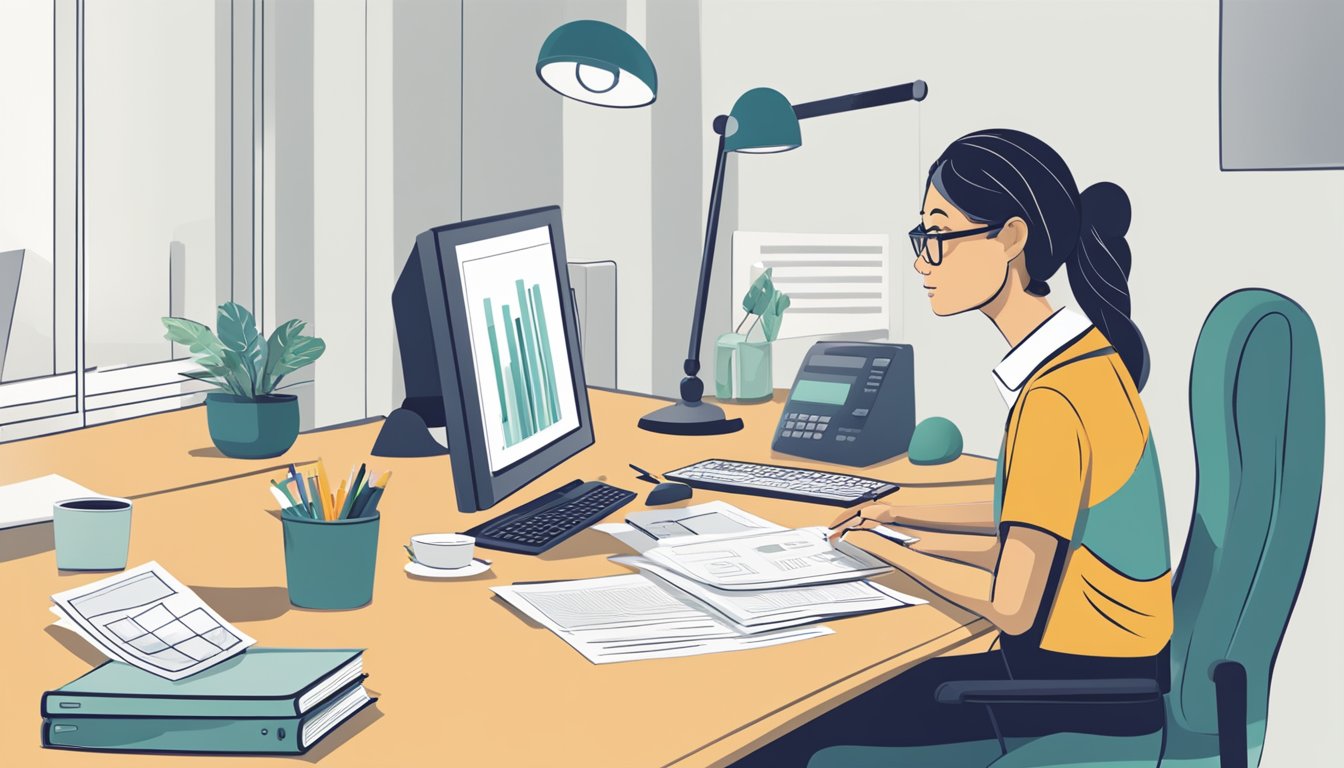Paying off CPF accrued interest in Singapore can be a daunting task, especially for those who are not familiar with the CPF scheme. CPF, or the Central Provident Fund, is a social security savings plan that helps Singaporeans save for retirement, healthcare, and housing. When using your CPF savings for housing, you will need to pay back the principal amount with the accrued interest. In this article, we will provide you with tips and strategies on how to pay off CPF accrued interest in Singapore, so you can better manage your finances and plan for your future.

Understanding CPF accrued interest is the first step towards paying it off. The interest is computed on the CPF principal amount withdrawn for housing on a monthly basis at the current CPF Ordinary Account interest rate and compounded yearly. This means that the longer you use your CPF savings for housing, the more accrued interest you will need to pay back. However, there are ways to manage your CPF for housing and minimize the amount of accrued interest you need to pay back. By following the strategies outlined in this article, you can pay off your CPF accrued interest and plan for your retirement with greater ease.
Key Takeaways
- Understanding CPF accrued interest is the first step towards paying it off.
- Managing your CPF for housing can help minimize the amount of accrued interest you need to pay back.
- By following the strategies outlined in this article, you can pay off your CPF accrued interest and plan for your retirement with greater ease.
Understanding CPF Accrued Interest

If you are a Singaporean citizen, you are likely familiar with the Central Provident Fund (CPF) system. CPF is a mandatory savings scheme designed to help Singaporeans save for retirement, healthcare, and housing. One of the key features of the CPF system is the interest that is earned on CPF funds.
The Basics of CPF Interest
CPF interest is the interest that is earned on your CPF funds. There are three CPF accounts: the Ordinary Account (OA), the Special Account (SA), and the Medisave Account (MA). The interest rate for the OA is currently 2.5% per annum, while the interest rates for the SA and MA are 4% and 4.5% per annum, respectively.
CPF interest is compounded annually, which means that the interest earned in each year is added to the principal amount, and interest is then earned on the new total. This compounding effect can result in significant growth in your CPF savings over time.
How Accrued Interest Works
When you use your CPF funds to pay for housing, you are required to pay back the principal amount plus accrued interest when you sell your property. Accrued interest is the interest that you would have earned if your CPF savings had not been withdrawn for housing.
Accrued interest is calculated at a rate of 2.5% per annum and compounded annually. The interest is calculated monthly from the time you took out the funds until you sell your property. This means that the longer you hold on to your property, the more accrued interest you will owe.
For example, if you used $100,000 from your CPF OA for housing for 5 years (60 months), your accrued interest would be:
Accrued Interest = $100,000 x (1 + 0.025/12)^60 = $15,119.42
It is important to understand the concept of accrued interest on CPF when using your CPF savings for housing in Singapore. Make sure to keep track of your accrued interest and plan accordingly when selling your property.
Managing Your CPF for Housing

If you’re planning to purchase a property in Singapore, you’ll need to manage your CPF (Central Provident Fund) savings carefully. Your CPF savings can be used to finance your property purchase, but it’s important to understand how this will affect your CPF savings in the long run. Here are some things to keep in mind when managing your CPF for housing.
Using CPF for Property Purchase
You can use your CPF savings to finance your property purchase, but there are limits to how much you can use. The amount you can use depends on the type of property you’re purchasing and your age. For example, if you’re purchasing an HDB flat, you can use up to $90,000 from your CPF Ordinary Account (OA) for the downpayment and monthly mortgage payments. If you’re purchasing a private property, you can use up to 15% of the purchase price from your CPF OA.
Impact of Housing on CPF Savings
Using your CPF savings for housing will affect your CPF savings in several ways. First, the amount you use for your property purchase will be deducted from your CPF OA balance. This means you’ll have less money available for other purposes, such as retirement. Second, you’ll need to pay back the amount you used for your property purchase, plus accrued interest, when you sell your property. This can reduce the amount of cash you receive from the sale.
CPF Withdrawals for Housing
If you’ve used your CPF savings for your property purchase, you may be able to withdraw your CPF savings when you sell your property. However, you’ll need to make sure you have enough savings in your CPF to meet the Full Retirement Sum (FRS) requirement. This means you’ll need to set aside a certain amount of money in your CPF Retirement Account (RA) before you can withdraw any excess savings.
It’s important to note that if you’ve used your CPF savings for your property purchase, you’ll need to pay back the amount you used, plus accrued interest, when you sell your property. You can choose to make an early voluntary housing refund without incurring any penalties. Additionally, you may be eligible for housing grants, such as the Enhanced CPF Housing Grant (EHG), which can help you finance your property purchase.
Managing your CPF savings for housing can be complex, but understanding the rules and regulations can help you make informed decisions. Keep in mind that using your CPF savings for housing can have a significant impact on your retirement savings, so it’s important to plan ahead and consider all your options.
Strategies to Pay Off CPF Accrued Interest

If you are a Singaporean or Permanent Resident, you are likely contributing to the Central Provident Fund (CPF). CPF accrued interest is the interest earned on CPF savings, and it can accumulate quickly over time. Here are some strategies to help you pay off CPF accrued interest:
Refinancing Your Property
Refinancing your property is one way to pay off CPF accrued interest. By refinancing, you can get a lower interest rate on your mortgage, which can help reduce your monthly payments. This can free up more money to pay off your CPF accrued interest. Additionally, refinancing can help you access the equity in your home, which you can use to pay off your CPF accrued interest.
Making Voluntary CPF Payments
Making voluntary CPF payments is another way to pay off CPF accrued interest. You can make voluntary contributions to your CPF account, which will be credited to your Special Account (SA) or MediSave Account (MA). These contributions can help you reach the Full Retirement Sum (FRS) faster and reduce your CPF accrued interest.
Optimising CPF Top-Ups and Refunds
Optimising your CPF top-ups and refunds is another way to pay off CPF accrued interest. You can top up your CPF Special Account (SA) or Retirement Account (RA) to enjoy tax relief and reduce your CPF accrued interest. Additionally, you can opt for a voluntary housing refund to your CPF account, which can help reduce your CPF accrued interest.
In summary, there are several strategies to pay off CPF accrued interest, including refinancing your property, making voluntary CPF payments, and optimising your CPF top-ups and refunds. By using these strategies, you can reduce your CPF accrued interest and reach your retirement goals faster.
Legal and Financial Considerations

When it comes to paying off CPF accrued interest in Singapore, there are a number of legal and financial considerations that you need to keep in mind. This section will cover some of the most important things you need to know.
Legal Fees and Stamp Duties
Before you can sell your property and pay off your CPF accrued interest, you will need to pay legal fees and stamp duties. These fees can vary depending on the value of your property and the complexity of your case. It is important to budget for these fees in advance so that you are not caught off guard.
Understanding CPF Grants and Penalties
If you have used CPF funds to finance your property, you may be eligible for CPF grants. These grants can help you pay off your accrued interest and reduce your overall debt. However, it is important to understand the eligibility criteria and application process for these grants.
On the other hand, if you fail to pay your CPF accrued interest on time, you may be penalised. These penalties can be quite steep, so it is important to make sure that you pay off your debt as soon as possible to avoid any unnecessary charges.
Overall, it is important to approach the process of paying off CPF accrued interest in a careful and considered manner. By understanding the legal and financial considerations involved, you can make informed decisions and ensure that you are able to pay off your debt in a timely and efficient manner.
Planning for Retirement with CPF

As a Singaporean or Permanent Resident, you have access to the Central Provident Fund (CPF) scheme, which is designed to help you save for your retirement. Planning for your retirement can be a daunting task, but with CPF, it is made easier with CPF planner. CPF planner helps you project your CPF payouts and shows you how you can make the most of your CPF savings.
Balancing Housing and Retirement Savings
When planning for your retirement, it is important to balance your housing and retirement savings. CPF funds can be used to finance your housing needs, but it is important to note that any CPF funds used to finance your house will be included in the amount that you’ll have to return to your CPF accounts. This includes the initial downpayment for HDB flat/private property, stamp duties and legal fees, monthly housing loans and lump sum payments, and housing grants received.
It is important to make sure that you have enough CPF savings for your retirement needs, while also considering the minimum occupancy period (MOP) for your property. The MOP is the minimum period of time that you are required to occupy your property before you can sell it or rent it out. If you sell your property before the MOP is up, you will have to return the CPF funds used to finance your property, including the accrued interest.
CPF Retirement Account Fundamentals
Your CPF savings are divided into three accounts: the Ordinary Account (OA), Special Account (SA), and Medisave Account (MA). The OA can be used for a variety of needs, including financing your housing needs, while the SA and MA are primarily used for retirement and healthcare needs, respectively.
When you turn 55, your CPF Retirement Account (RA) is created. Your CPF savings are transferred to your RA, and you will need to meet the Full Retirement Sum (FRS) before you can start receiving your CPF payouts. The FRS is currently set at $186,000, while the Basic Retirement Sum (BRS) is set at $93,000.
You can start withdrawing your CPF savings from your RA when you turn 65, or you can choose to defer your payouts until a later date. It is important to note that the CPF Board guarantees a minimum interest rate of 4% per annum for your CPF savings in your RA.
Case Study: If you have $150,000 in your RA, you will receive a yearly payout of $7,200 for 20 years starting from age 65. This assumes that you have met the FRS and that the FRS remains at $186,000.
In conclusion, planning for your retirement with CPF can be made easier with CPF planner. Balancing your housing and retirement savings is crucial, and understanding the fundamentals of your CPF Retirement Account is important in ensuring that you have enough retirement savings.
Frequently Asked Questions

What’s the best method to settle my CPF accrued interest?
The best method to settle your CPF accrued interest is to use your CPF Ordinary Account (OA) savings. You can also use your CPF Special Account (SA) or Retirement Account (RA) savings if you have enough funds. If you don’t have enough funds in your CPF accounts, you can use cash to settle the accrued interest.
Can I sidestep CPF accrued interest, and if so, how?
No, you cannot sidestep CPF accrued interest. Accrued interest is the interest amount that you would have earned if your CPF savings had not been withdrawn for housing. The interest is computed on the CPF principal amount withdrawn for housing on a monthly basis (at the current CPF Ordinary Account interest rate) and compounded yearly.
What happens to my accrued interest once I hit 55?
Once you hit 55, your CPF accrued interest will be transferred to your CPF Retirement Account (RA). Your RA savings will be used to provide you with a monthly payout for your retirement.
How does the CPF accrued interest mechanism actually operate?
The CPF accrued interest mechanism operates by computing the interest amount that you would have earned if your CPF savings had not been withdrawn for housing. The interest is computed on the CPF principal amount withdrawn for housing on a monthly basis (at the current CPF Ordinary Account interest rate) and compounded yearly.
Where can I find the amount of accrued interest on my CPF account?
You can find the amount of accrued interest on your CPF account by logging in to your CPF account on the CPF website. The accrued interest amount will be shown in your CPF statement.
Is there a way to calculate the CPF accrued interest that I owe?
Yes, there is a way to calculate the CPF accrued interest that you owe. The total amount that you’ll have to pay back to your CPF accounts is the principal amount with the accrued interest. The principal amount is the total amount you took out to finance your house, while the interest rate is the OA’s interest rate at 2.5% per annum. You can use an online CPF accrued interest calculator to calculate the amount you owe.




